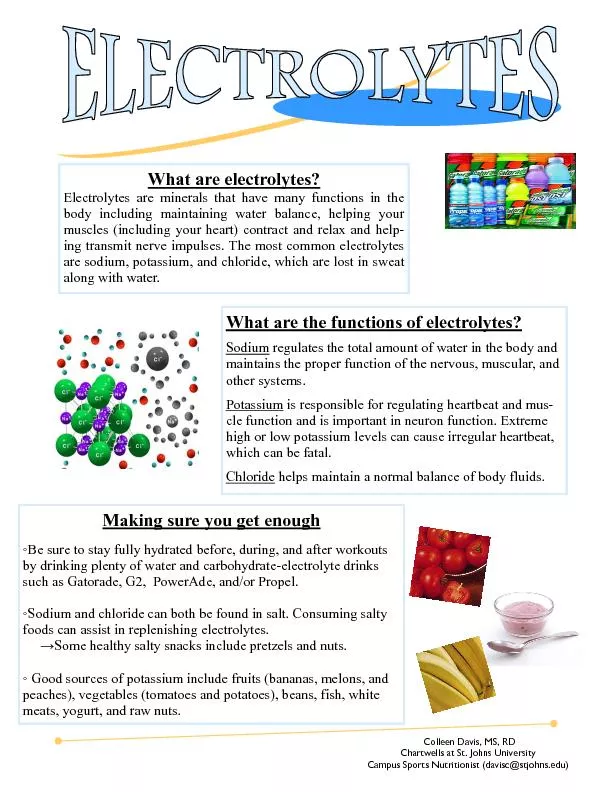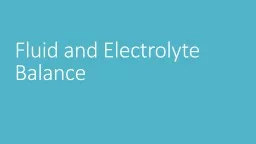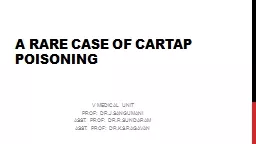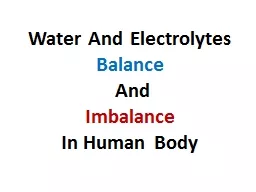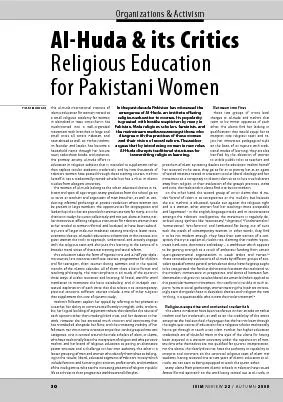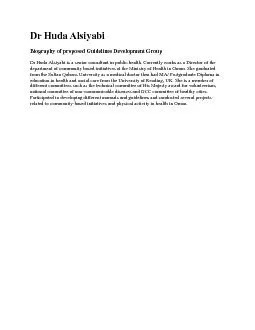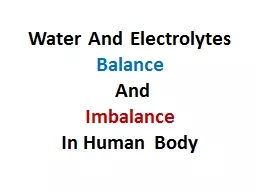PPT-Electrolytes Asst. Prof. Dr.Huda Jaber
Author : BabyDolly | Published Date : 2022-08-03
PhD Clinical biochemistry Drhudajwuomustansiriyaheduiq What are electrolytes Electrolytes are chemicals that conduct electricity when mixed with water They regulate
Presentation Embed Code
Download Presentation
Download Presentation The PPT/PDF document "Electrolytes Asst. Prof. Dr.Huda Jaber" is the property of its rightful owner. Permission is granted to download and print the materials on this website for personal, non-commercial use only, and to display it on your personal computer provided you do not modify the materials and that you retain all copyright notices contained in the materials. By downloading content from our website, you accept the terms of this agreement.
Electrolytes Asst. Prof. Dr.Huda Jaber: Transcript
Download Rules Of Document
"Electrolytes Asst. Prof. Dr.Huda Jaber"The content belongs to its owner. You may download and print it for personal use, without modification, and keep all copyright notices. By downloading, you agree to these terms.
Related Documents


